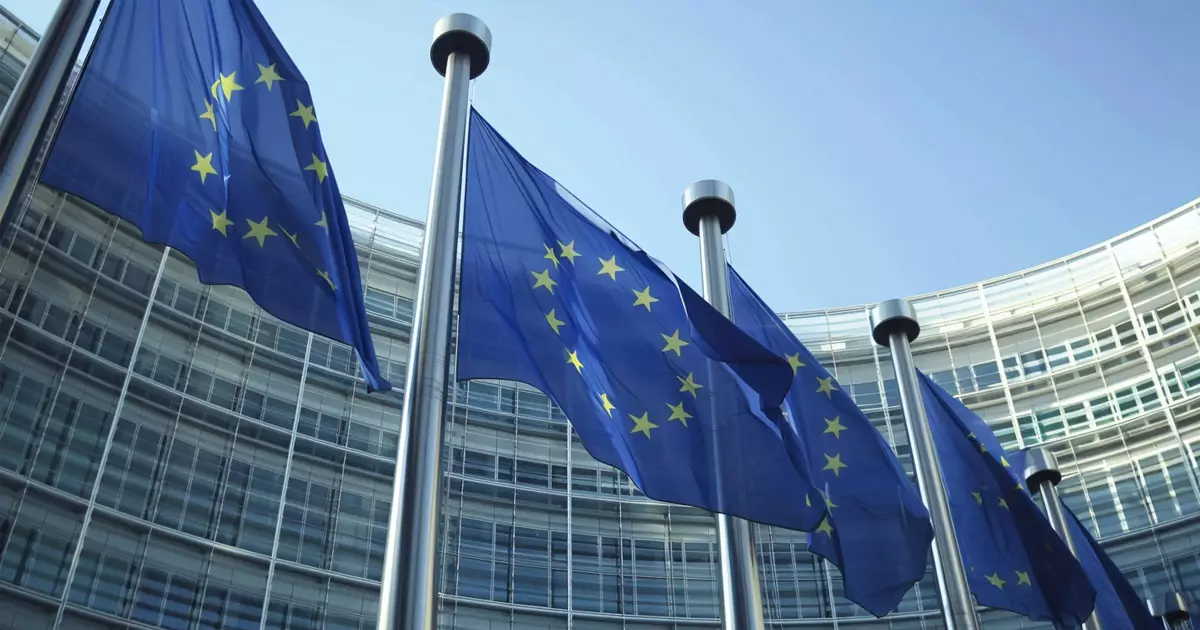Since its introduction in 2020, the European Union’s Markets in Crypto-Assets (MiCA) regulation has fundamentally altered the narrative surrounding the continent’s role in the global crypto industry. Traditionally viewed as a secondary player compared to the United States and Asia, Europe is now positioning itself as a pioneer by establishing rigorous standards aimed at fostering innovation and ensuring consumer protection. The MiCA regulations not only respond to existing challenges within the crypto sector but also indicate a shift towards a more structured and growth-oriented environment for digital assets. This growing emphasis on regulation signifies a new chapter, wherein companies are being nudged—if not compelled—to enhance their products and services in compliance with established guidelines.
The transition to compliance with MiCA has not come without its hurdles. A notable instance is Coinbase’s recent decision to remove stablecoins not sanctioned by the regulation by the end of 2024. This move highlights the urgency and complexity concerning compliance. Stablecoins, particularly those like USDT (Tether’s stablecoin), stand at a critical junction where their future will rely heavily on conforming to regulations that can sometimes appear vague and ambiguous. Tether’s response—alluding to a forthcoming “technology-based solution”—underscores the necessity for innovation within the stablecoin landscape. Firm compliance measures could pave the way for safer, more reliable financial products, leading us to question why such responsive solutions weren’t prioritized earlier when the regulatory fog was less pronounced.
Historical precedents exist that demonstrate the tension between emerging technologies and regulatory frameworks. The introduction of the General Data Protection Regulation (GDPR) in 2016 serves as a relevant comparison. Just as GDPR set a new global standard for data security and privacy, MiCA has the potential to reshape the landscape of the cryptocurrency market, offering a unified framework that encourages market participants to comply without hindering innovation. By creating a standardized operation procedure across the EU, MiCA could help dismantle barriers between countries, enabling compliant digital assets to access broader markets seamlessly.
At its core, MiCA confronts critical issues within the crypto ecosystem—namely, consumer protection and environmental sustainability. The regulation mandates that crypto providers uphold their responsibility to inform investors of inherent risks, such as market volatility and possible fraud, enhancing overall transparency. Moreover, as climate consciousness rises, MiCA’s requirement for companies to disclose their environmental impact represents a progressive step towards ensuring a green future for the crypto industry. Achieving transparency and sustainability does not merely contribute to an improved public image; it actively incentivizes a culture of responsibility among crypto entities.
MiCA’s stringent approach to stablecoins, particularly in requiring issuers to demonstrate full transparency regarding their reserves, is crucial. Confidence in these digital assets has been undermined by previous concerns about their underlying value and stability. Recent regulatory measures compel stablecoin providers to respond to these concerns more decisively, ensuring that marketplace players operate under clear, verifiable standards. Companies such as Circle are already taking proactive steps, having secured the necessary licensing to align with MiCA’s guidelines, thus setting a benchmark for other operators.
The implication of MiCA for the future of cryptocurrency in Europe could be transformative. The regulations do not merely imply compliance; they signal a ‘do-or-die’ scenario where the pressure to innovate will likely spur traditional and nascent businesses alike to embrace the crypto landscape. By cultivating a trustworthy environment, MiCA lays the groundwork for increased participation from established industries. This could subsequently lead to a surge in investments, the influx of talent, and a robust ecosystem that promotes economic growth and technological advancement within the region.
MiCA’s successful deployment could have significant ramifications beyond Europe’s borders. As a regulatory model, it may inspire other jurisdictions to develop their own frameworks, akin to how GDPR set new standards for data privacy worldwide. The clarity that MiCA offers stands in stark contrast to the fragmented and often inconsistent regulatory approaches seen elsewhere, particularly in the U.S. If MiCA delivers on its promises, it may indeed serve as a prototype for cohesive global regulation in the ever-evolving world of cryptocurrencies.
In essence, MiCA heralds a groundbreaking evolution in the European digital asset space. As we approach the full enforcement of these regulations by 2026, the emerging landscape promises not only safer and more reliable products but a more secure and sustainable crypto ecosystem that could influence global practices.

